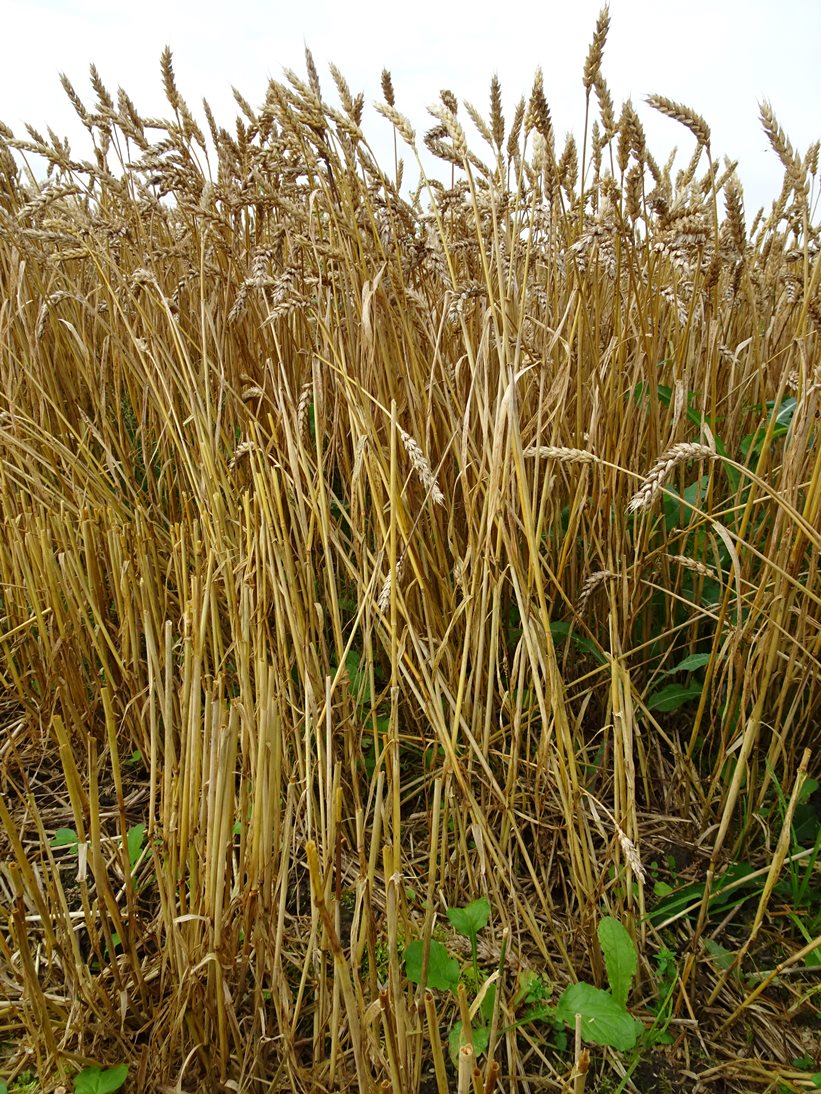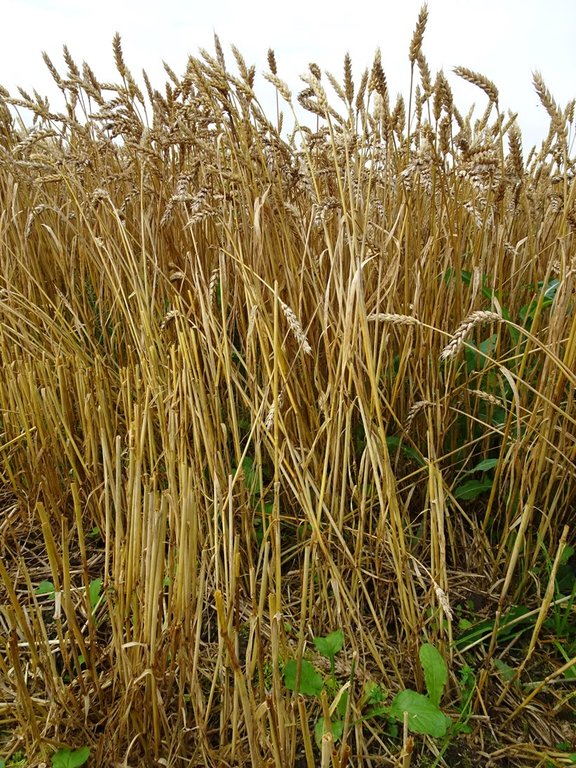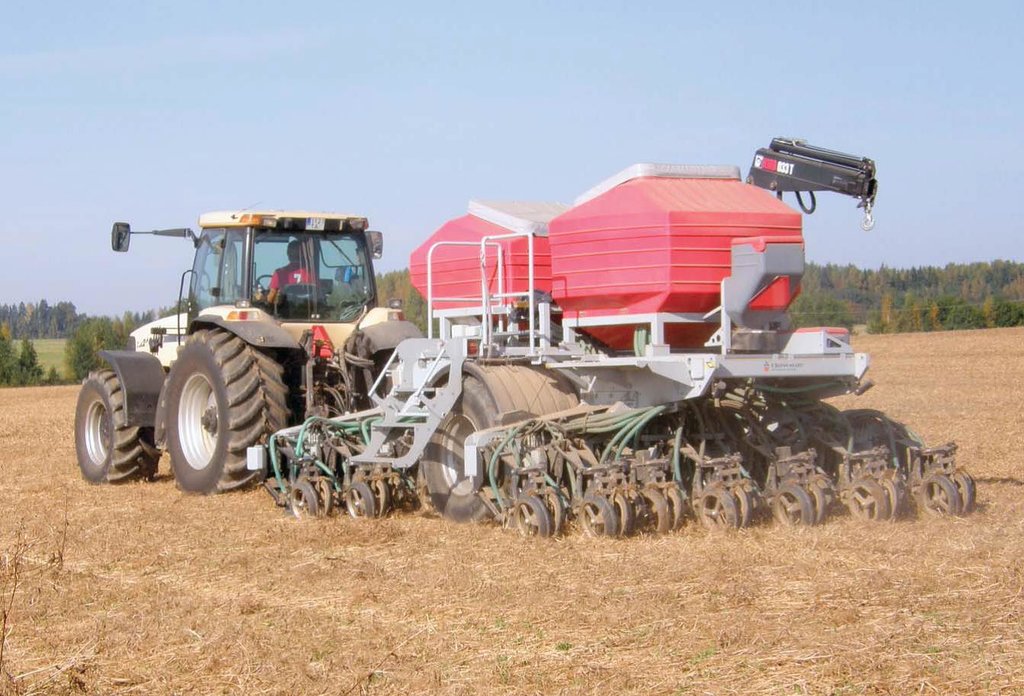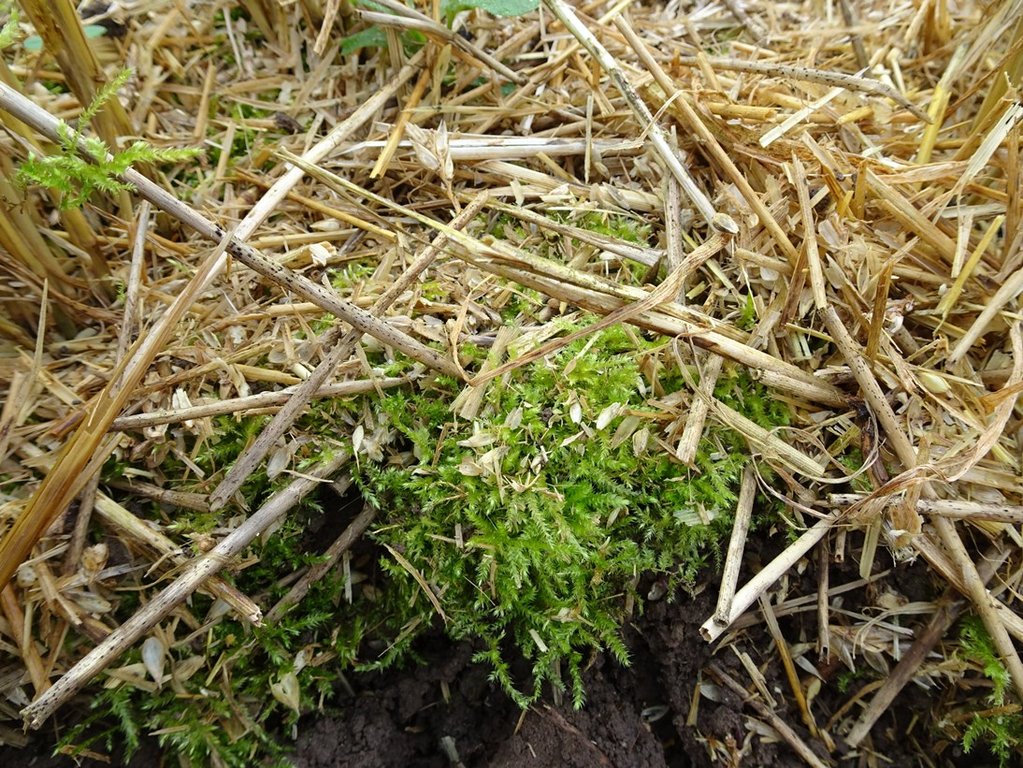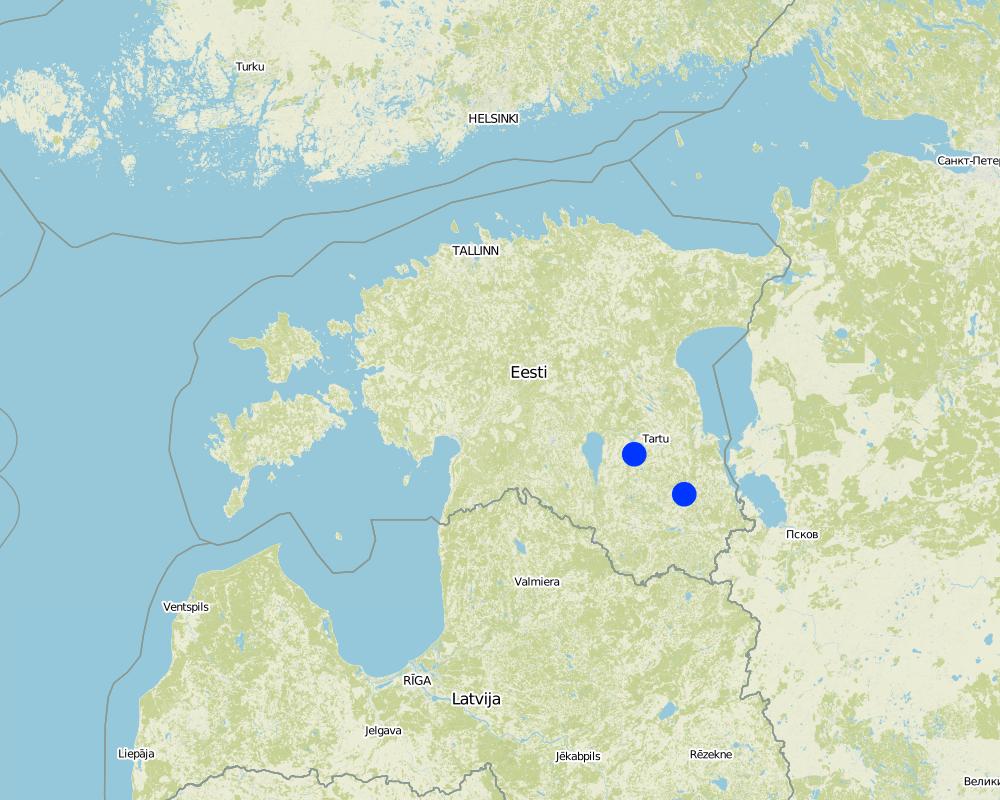No-tillage [Estonia]
- Creation:
- Update:
- Compiler: Endla Reintam
- Editor: –
- Reviewers: Ursula Gaemperli, Gudrun Schwilch
Otsekülv
technologies_3089 - Estonia
View sections
Expand all Collapse all1. General information
1.2 Contact details of resource persons and institutions involved in the assessment and documentation of the Technology
land user:
Tobreluts Toomas
+3725136527
tobreluts@hot.ee
Pirmastu OÜ
Puuri küla, Põlva vald, Põlva maakond, Eesti Vabariik, 63220
Estonia
researcher:
Penu Priit
3725156165
priit.penu@pmk.agri.ee
Estonian Agricultural Research Centre
Teaduse 4/6, 75501 Saku, Harjumaa
Estonia
Name of project which facilitated the documentation/ evaluation of the Technology (if relevant)
Interactive Soil Quality assessment in Europe and China for Agricultural productivity and Environmental Resilience (EU-iSQAPER)Name of the institution(s) which facilitated the documentation/ evaluation of the Technology (if relevant)
Institute of Agricultural and Environmental Sciences, Estonian University of Life Sciences (IAES/EMÜ) - Estonia1.3 Conditions regarding the use of data documented through WOCAT
When were the data compiled (in the field)?
04/06/2017
The compiler and key resource person(s) accept the conditions regarding the use of data documented through WOCAT:
Ja
1.4 Declaration on sustainability of the described Technology
Is the Technology described here problematic with regard to land degradation, so that it cannot be declared a sustainable land management technology?
Nee
2. Description of the SLM Technology
2.1 Short description of the Technology
Definition of the Technology:
No-till farming (also called zero tillage or direct drilling) is a way of growing crops or pasture from year to year without disturbing the soil through tillage.
2.2 Detailed description of the Technology
Description:
The technology is applied in sub-humid climate with an average of 696 mm of precipitations per year, from which more comes from July to October and less in March and April. Average annual temperature is +4 C, length of the growing period is 180-195 days. The territory is mostly flat, the southern part is hilly with slopes of 6-10%. Average altitude from the sea level is 50 m. About half of the Estonian territory is above 50 m and half is below it. Soils are from very shallow (less than 0.1 m) in the north to very deep (> 120m ) in the south. Soil cover is very variable. In the agricultural area the soils are medium textured with low (< 1%) to high (>5%) organic matter in topsoil. Groundwater is near the surface in wet soils and deep in hilly areas. Biodiversity varies from high to low depending on soil and landscape. Market orientation of production system is mixed and off-farm income is less than 10%. Relative level of wealth is average from individual households to cooperatives. Soil management is mechanized. Land belongs to land users, but is leased also in case of bigger farms (over 100 ha).
The purpose of the technology is to reduce soil disturbance and with that to reduce erosion and leaching, increase carbon storage, water infiltration and biological activity. Only 5-10% of the soil surface is disturbed during sowing. The drilling is made by special machinery and thus no-till farming requires specialized seeding equipment designed to plant seeds into undisturbed crop residues and soil. Drilling depth depends on the specific needs of the culture. If the straw remains on the field, it should be chopped to smaller pieces (25-40 mm). For direct seeding it is good if the previous culture was seeded with wider spacing, for example 25 cm and harvest height is 15-20 cm. New sowing will be done between previous crop rows. The highest investment to this technology is the new drilling machine. At the same time there is no need for special tillage machines. In order to help eliminate weed, pest and disease problems, crop rotations and pesticides are used. The system is not suitable for root crops. The no-till system is suitable for cereal based cropping systems as well as for renewing grasslands. The suitable crop rotation, for exampe, is: winter oilseed rape - winter wheat - pea (or bean) - winter wheat - spring barley undersown with red clover - red clover. The main benefit is the reduced working time, fuel costs and with that the lower net-cost of the product, but also the better soil structure. The adoption of the technology may increase weediness and pests and decrease the yield due to the preliminar soil compaction of upper 10-20 cm soil layer. If the soil surface of the field is not enough levelled out, the uniformity of the depth of the seedlings can suffer. There is also increased use of pesticides to control weeds, pests and diseases compared to minimum and conventional tillage. The technology is most suitable for medium-texture soils.
2.3 Photos of the Technology
2.5 Country/ region/ locations where the Technology has been applied and which are covered by this assessment
Country:
Estonia
Region/ State/ Province:
Tartu county, Põlva county
Further specification of location:
Tartu county, Meeri; Põlva county, Puuri
Map
×2.6 Date of implementation
If precise year is not known, indicate approximate date:
- less than 10 years ago (recently)
2.7 Introduction of the Technology
Specify how the Technology was introduced:
- through land users' innovation
3. Classification of the SLM Technology
3.1 Main purpose(s) of the Technology
- reduce, prevent, restore land degradation
- reduce tillage cost
3.2 Current land use type(s) where the Technology is applied

Cropland
- Annual cropping
Main crops (cash and food crops):
Crops: wheat, barley, rye, oat
If land use has changed due to the implementation of the Technology, indicate land use before implementation of the Technology:
Before implementation of the no-tillage the conventional and/or reduced tillage was used.
3.3 Further information about land use
Water supply for the land on which the Technology is applied:
- rainfed
Number of growing seasons per year:
- 1
Specify:
One harvest of cereals.
3.4 SLM group to which the Technology belongs
- improved ground/ vegetation cover
- minimal soil disturbance
3.5 Spread of the Technology
Specify the spread of the Technology:
- evenly spread over an area
If the Technology is evenly spread over an area, indicate approximate area covered:
- 1-10 km2
Comments:
The total area of no-till in Estonia is ca 42 000 ha. On the farm near Tartu it is 1700 ha of land, of which 300 ha are grasslands. The farm near Põlva encompasses an area of 850 ha of which 330 ha are grasslands. The whole area of both farms is managed by no-tillage.
3.6 SLM measures comprising the Technology

agronomic measures
- A3: Soil surface treatment
3.7 Main types of land degradation addressed by the Technology

soil erosion by water
- Wt: loss of topsoil/ surface erosion

soil erosion by wind
- Et: loss of topsoil

chemical soil deterioration
- Cn: fertility decline and reduced organic matter content (not caused by erosion)

physical soil deterioration
- Pc: compaction
3.8 Prevention, reduction, or restoration of land degradation
Specify the goal of the Technology with regard to land degradation:
- prevent land degradation
- reduce land degradation
4. Technical specifications, implementation activities, inputs, and costs
4.1 Technical drawing of the Technology
4.2 Technical specifications/ explanations of technical drawing
The agrotechnology in case of no-tillage depends on available equipments (drill). If the straw remains on the field, it should be chopped to smaller pieces of 25-40 mm. For direct seeding it is good if the previous culture was seeded with wider spacing, for example 25 cm. Harvest height is 15-20 cm. New seeding will be done between previous crop rows.
4.3 General information regarding the calculation of inputs and costs
Specify how costs and inputs were calculated:
- per Technology unit
Specify unit:
per hectare
other/ national currency (specify):
EUR
Indicate exchange rate from USD to local currency (if relevant): 1 USD =:
1.18
Indicate average wage cost of hired labour per day:
36-40 EUR/day + taxes
4.4 Establishment activities
| Activity | Type of measure | Timing | |
|---|---|---|---|
| 1. | New direct seeder | Other measures |
Comments:
If you are already active in agriculture, the investment is the new seeder. You also need to have machinery to spread fertilizers and pesticides.
4.5 Costs and inputs needed for establishment
| Specify input | Unit | Quantity | Costs per Unit | Total costs per input | % of costs borne by land users | |
|---|---|---|---|---|---|---|
| Equipment | Direct seeder (3m) | piece | 1.0 | 25000.0 | 25000.0 | 100.0 |
| Total costs for establishment of the Technology | 25000.0 | |||||
If land user bore less than 100% of costs, indicate who covered the remaining costs:
It is possible to apply for an investment support up to 50% of the total price (governmental tool till the year 2020).
Comments:
The cost of the direct seeder depends on the farmers prefererences regarding the technology. The cheapest direct seeder can be purchased for ca. 25 000 EUR. Better quality of a cross slot seeder that places seeds under the soil (technical drawing and picture) costs ca 200 000 EUR (working width 4.6 m).
4.6 Maintenance/ recurrent activities
| Activity | Type of measure | Timing/ frequency | |
|---|---|---|---|
| 1. | Sowing together with fertilization | Agronomic | before drilling (spring crops in spring (April), winter crops in autumn (August)) |
| 2. | Plant protection | Agronomic | in spring 2 weeks before sowing, herbicides, during growth period depending on the needs ca 3 times |
| 3. | Fertilization during growth period | Agronomic | For winter crops in spring after snowmelt in the beginning of growth, for spring crops in the beginning of intensive growth |
| 4. | Harvest and grain transport | Agronomic | At the end of season (end of July to beginning of September depending of the crop) |
| 5. | Drying of grain and soil tillage | Agronomic | after harvest |
Comments:
The need of plant protection depends on the field conditions. Less pesticides are needed if proper crop rotation with break crops is established and weeds are thus suppressed.
4.7 Costs and inputs needed for maintenance/ recurrent activities (per year)
| Specify input | Unit | Quantity | Costs per Unit | Total costs per input | % of costs borne by land users | |
|---|---|---|---|---|---|---|
| Equipment | Sowing with fertilization | times | 1.0 | 55.9 | 55.9 | 100.0 |
| Equipment | Plant protection | times | 4.0 | 11.2 | 44.8 | 100.0 |
| Equipment | Fertilization during growth period | times | 1.0 | 16.2 | 16.2 | 100.0 |
| Equipment | Harvest and grain transport | times | 1.0 | 118.4 | 118.4 | 100.0 |
| Equipment | Drying and after harvest activities | times | 1.0 | 132.1 | 132.1 | 100.0 |
| Plant material | seeds | kg | 200.0 | 0.28 | 56.0 | 100.0 |
| Fertilizers and biocides | Ammonium nitrate (2x per season) | kg | 147.0 | 0.84 | 123.48 | 100.0 |
| Fertilizers and biocides | Complex fertilizer (27 kg N, 40 kg P and 112 kg K per ha) (450 kg of fertilizer per ha) | kg | 179.0 | 0.74 | 132.46 | 100.0 |
| Fertilizers and biocides | Herbicides (2 times) | times | 2.0 | 27.0 | 54.0 | 100.0 |
| Fertilizers and biocides | Fungicides (1 time) | times | 1.0 | 33.2 | 33.2 | 100.0 |
| Fertilizers and biocides | Insecticides (1 time) | times | 1.0 | 3.6 | 3.6 | 100.0 |
| Fertilizers and biocides | Retartants | times | 1.0 | 14.0 | 14.0 | 100.0 |
| Total costs for maintenance of the Technology | 784.14 | |||||
Comments:
The labour costs are included to the machinery work costs. On average the labour cost for a driver is 15-18 EUR/ha.
The average machinery work costs to produce 6 t of winter wheat were 432 EUR/ha, 400 EUR/ha and 780 EUR/ha in conventional, minimum and no-tillage, respectively in 2016. Cost of production in this case was 137 EUR/t, 132 EUR/t and 128 EUR/t in conventional, minimum and no-tillage, respectively.
To produce the same amount of spring barley, the cost of machinery was 431 EUR/ha, 411 EUR/ha and 366 EUR/ha in conventional, minimum and no-tillage, respectively. Cost of production in this case was 123 EUR/t, 121 EUR/t and 114 EUR/t in conventional, minimum and no-tillage, respectively. It means that the cost of production is 8-11 EUR less than compared with plough based production.
Fuel cost is ca 50% less than in conventional plough based farming.
4.8 Most important factors affecting the costs
Describe the most determinate factors affecting the costs:
Fuel price, labour costs.
5. Natural and human environment
5.1 Climate
Annual rainfall
- < 250 mm
- 251-500 mm
- 501-750 mm
- 751-1,000 mm
- 1,001-1,500 mm
- 1,501-2,000 mm
- 2,001-3,000 mm
- 3,001-4,000 mm
- > 4,000 mm
Specify average annual rainfall (if known), in mm:
696.00
Specifications/ comments on rainfall:
Average 696 mm, almost equally spread over the year, more from July to October, less in March and April.
Indicate the name of the reference meteorological station considered:
Tartu Tõravere
Agro-climatic zone
- sub-humid
LGP 180-195 days
5.2 Topography
Slopes on average:
- flat (0-2%)
- gentle (3-5%)
- moderate (6-10%)
- rolling (11-15%)
- hilly (16-30%)
- steep (31-60%)
- very steep (>60%)
Landforms:
- plateau/plains
- ridges
- mountain slopes
- hill slopes
- footslopes
- valley floors
Altitudinal zone:
- 0-100 m a.s.l.
- 101-500 m a.s.l.
- 501-1,000 m a.s.l.
- 1,001-1,500 m a.s.l.
- 1,501-2,000 m a.s.l.
- 2,001-2,500 m a.s.l.
- 2,501-3,000 m a.s.l.
- 3,001-4,000 m a.s.l.
- > 4,000 m a.s.l.
Indicate if the Technology is specifically applied in:
- convex situations
5.3 Soils
Soil depth on average:
- very shallow (0-20 cm)
- shallow (21-50 cm)
- moderately deep (51-80 cm)
- deep (81-120 cm)
- very deep (> 120 cm)
Soil texture (topsoil):
- medium (loamy, silty)
Soil texture (> 20 cm below surface):
- medium (loamy, silty)
Topsoil organic matter:
- medium (1-3%)
If available, attach full soil description or specify the available information, e.g. soil type, soil PH/ acidity, Cation Exchange Capacity, nitrogen, salinity etc.
Soil type: sandy loam Stagnic Luvisol; N 0.12%, Corg 1.15%; C:N 9.97, P 4.35 mg/100g, K 10.19mg/100g, Ca 49.61mg/100g, Mg 12.19mg/100g, pH 6.0
5.4 Water availability and quality
Ground water table:
5-50 m
Availability of surface water:
good
Water quality (untreated):
good drinking water
Is water salinity a problem?
Nee
Is flooding of the area occurring?
Nee
5.5 Biodiversity
Species diversity:
- medium
Habitat diversity:
- medium
Comments and further specifications on biodiversity:
Soil biodiversity is higher compared to conventional tillage.
5.6 Characteristics of land users applying the Technology
Sedentary or nomadic:
- Sedentary
Market orientation of production system:
- mixed (subsistence/ commercial
Off-farm income:
- less than 10% of all income
Relative level of wealth:
- average
Individuals or groups:
- individual/ household
- cooperative
Level of mechanization:
- mechanized/ motorized
Gender:
- women
- men
Age of land users:
- youth
- middle-aged
5.7 Average area of land owned or leased by land users applying the Technology
- < 0.5 ha
- 0.5-1 ha
- 1-2 ha
- 2-5 ha
- 5-15 ha
- 15-50 ha
- 50-100 ha
- 100-500 ha
- 500-1,000 ha
- 1,000-10,000 ha
- > 10,000 ha
Is this considered small-, medium- or large-scale (referring to local context)?
- medium-scale
Comments:
The farm near Tatu owns 1700 ha of land, of which 300 ha are grasslands. The farm near Põlva encompasses a total of 850 ha of which 330 ha are grasslands. All soils of both farms are managed by no-tillage.
5.8 Land ownership, land use rights, and water use rights
Land ownership:
- state
- individual, titled
Land use rights:
- leased
- individual
Water use rights:
- open access (unorganized)
- individual
5.9 Access to services and infrastructure
health:
- poor
- moderate
- good
education:
- poor
- moderate
- good
technical assistance:
- poor
- moderate
- good
employment (e.g. off-farm):
- poor
- moderate
- good
markets:
- poor
- moderate
- good
energy:
- poor
- moderate
- good
roads and transport:
- poor
- moderate
- good
drinking water and sanitation:
- poor
- moderate
- good
financial services:
- poor
- moderate
- good
6. Impacts and concluding statements
6.1 On-site impacts the Technology has shown
Socio-economic impacts
Production
crop production
Comments/ specify:
In different years the crop production may be higher than by ploughing, but another year lower. There has been decrease of spring barley yield by 0.1 t/ha. Winter wheat yield has been ca 1.4 t/ha higher than by ploughing.
crop quality
Comments/ specify:
No statistically significant difference has been found. However, winter wheat 1000 grain weight was reported 39.6 g by no-tillage and 38.5 g by ploughing.
land management
Comments/ specify:
No need for soil tillage. Instead of several machinery to till the soil, one compact sowing machine is needed.
Income and costs
expenses on agricultural inputs
Comments/ specify:
Less cost for fuel because 50% less fuel is needed compared with ploughing.
farm income
Comments/ specify:
Even if the yield is a little bit lower or the same as with ploughing, the unit cost to produce barley or winter wheat is 8-11 EUR less than with ploughing.
workload
Comments/ specify:
No time to be spent for tillage. Even extra spreading of pesticides takes less time than ploughing and other tillage operations.
Socio-cultural impacts
food security/ self-sufficiency
Comments/ specify:
Unit cost of the production is lower and thus it is possible to sell production cheaper.
SLM/ land degradation knowledge
Comments/ specify:
If land was eroded before and soil was on the road, everybody can see the differences after establishment of the grasslands. It is not so severe in case of peatlands, however, less tractors will stuck in to the mud on rainy period.
Ecological impacts
Water cycle/ runoff
harvesting/ collection of water
Comments/ specify:
Residues remaining on the soil surface help to catch more snow during the winter.
surface runoff
Comments/ specify:
Plant residues protect soil surface structure from raindrop effects, allowing water to infiltrate quicker in the soil.
excess water drainage
Comments/ specify:
Undisturbed soil pore structure allows water quicker to drain in the deeper soil layers. Water permeability of long-term no-till soil is 2 times higher than under conventional management.
evaporation
Comments/ specify:
Residues on the soil surface do not allow quick evaporation, protecting soil surface.
Soil
soil moisture
Comments/ specify:
Soil moisture content was 3% higher than by ploughing, but not significantly.
soil cover
Quantity before SLM:
0
Quantity after SLM:
100%
Comments/ specify:
The soil is covered by plants or by plant residues during the whole year.
soil loss
Comments/ specify:
Residues and plant cover stop both wind and water erosion.
soil accumulation
Comments/ specify:
Reduced decomposition of organic matter increases organic carbon content by 0.1-0.2%.
soil crusting/ sealing
Comments/ specify:
No crust after applying no-tillage as plant residues protect the soil surface.
soil compaction
Comments/ specify:
Increased from the top (by 0.04 g/cm3) but decreased deeper in the soil by 0.08 g/cm3) compared to the ploughing. No plough pan. Soil penetration resistance was 1 MPa lower between 20-40 cm under no-tillage compared to ploughing.
nutrient cycling/ recharge
Comments/ specify:
Due to the decreased decomposition of organic matter and the increase of organic carbon, more nitrogen remains in the soil.
soil organic matter/ below ground C
Comments/ specify:
It was found that there was slight increase of organic carbon (Corg) by 0.1-0.2% in upper 5 cm of soil compared to ploughing.
Biodiversity: vegetation, animals
Vegetation cover
Comments/ specify:
Plant/residue cover is during the whole year.
biomass/ above ground C
Comments/ specify:
As there is no tillage, all residues remain on the soil surface.
plant diversity
Comments/ specify:
Due to the need of changes in crop rotation, more diverse rotations instead of monoculture to suppress weeds. Weeds diversity might increase and change due to the reduced tillage intensity.
animal diversity
Comments/ specify:
More spiders, beetles, ants compared with ploughing.
beneficial species
Quantity before SLM:
2 species of earthworms
Quantity after SLM:
3-4 species of earthworms
Comments/ specify:
More earthworm species and higher abundance compared with ploughing.
habitat diversity
Comments/ specify:
No-till areas create different pattern to the landscape.
pest/ disease control
Comments/ specify:
Some diseases and pests are surpressed, but there is increase of slugs and snails.
Climate and disaster risk reduction
emission of carbon and greenhouse gases
Comments/ specify:
Due to the reduced use of fuels for tillage, less greenhouse gases will be released. 0.05 kg/ha less greenhouse gases per kg yield is reported by no-tillage compared to ploughing.
fire risk
Comments/ specify:
Dry plant residues are a high risk in spring.
micro-climate
Comments/ specify:
Due to the residue cover the soil temperature and water content fluctuations are smaller.
6.2 Off-site impacts the Technology has shown
buffering/ filtering capacity
Comments/ specify:
Due to the higher amount of organic matter, the nutrients and water holding capacity is higher.
wind transported sediments
Comments/ specify:
No wind erosion after applying no-tillage.
damage on neighbours' fields
Comments/ specify:
No sediments from the field to the neighbours fields.
damage on public/ private infrastructure
Comments/ specify:
In case of erosion, no soil is carried by water or wind to the ditches and on the roads.
impact of greenhouse gases
Comments/ specify:
Due to the reduced use of fuels for tillage, less greenhouse gases will be released. 0.05 kg/ha less greenhouse gases per kg yield is reported by no-tillage compared to ploughing.
6.3 Exposure and sensitivity of the Technology to gradual climate change and climate-related extremes/ disasters (as perceived by land users)
Gradual climate change
Gradual climate change
| Season | Type of climatic change/ extreme | How does the Technology cope with it? | |
|---|---|---|---|
| annual temperature | increase | not known | |
| seasonal temperature | winter | increase | not known |
| seasonal temperature | spring | increase | not known |
| annual rainfall | increase | not known | |
| seasonal rainfall | winter | increase | not known |
| seasonal rainfall | autumn | increase | not known |
Climate-related extremes (disasters)
Meteorological disasters
| How does the Technology cope with it? | |
|---|---|
| local rainstorm | not known |
| local thunderstorm | not known |
| local hailstorm | not known |
| local snowstorm | not known |
| local windstorm | not known |
Climatological disasters
| How does the Technology cope with it? | |
|---|---|
| cold wave | not known |
| extreme winter conditions | not known |
| land fire | not well |
6.4 Cost-benefit analysis
How do the benefits compare with the establishment costs (from land users’ perspective)?
Short-term returns:
slightly negative
Long-term returns:
positive
How do the benefits compare with the maintenance/ recurrent costs (from land users' perspective)?
Short-term returns:
positive
Long-term returns:
positive
6.5 Adoption of the Technology
- 1-10%
If available, quantify (no. of households and/ or area covered):
7% from agricultural land
Of all those who have adopted the Technology, how many have did so spontaneously, i.e. without receiving any material incentives/ payments?
- 50-90%
Comments:
It is possible to get investment support from the governmental agricultural tools up to 50% from the total cost of equipment.
6.6 Adaptation
Has the Technology been modified recently to adapt to changing conditions?
Nee
6.7 Strengths/ advantages/ opportunities of the Technology
| Strengths/ advantages/ opportunities in the land user’s view |
|---|
| Decreases work load and time, also fuel consumption, increases income. |
| Increases soil biological activity, soil organic matter content, better structure and infiltration, decreases erosion. |
| Strengths/ advantages/ opportunities in the compiler’s or other key resource person’s view |
|---|
| Decrease of soil organic carbon decomposition, decrease of erosion, increase of soil biological activity. |
6.8 Weaknesses/ disadvantages/ risks of the Technology and ways of overcoming them
| Weaknesses/ disadvantages/ risks in the land user’s view | How can they be overcome? |
|---|---|
| High preliminary investment (seeder), increase of weediness and pests, | Investment support, better crop rotation. |
| Weaknesses/ disadvantages/ risks in the compiler’s or other key resource person’s view | How can they be overcome? |
|---|---|
| Higher use of pesticides and therefore risk to soil and water pollution. | Suggestion of changes in crop rotation, cover crops. |
7. References and links
7.1 Methods/ sources of information
- field visits, field surveys
2 during the iSQAPER project, more than 5 in total with other projects
- interviews with land users
2, more than 5 in total with other projects
- compilation from reports and other existing documentation
6
7.2 References to available publications
Title, author, year, ISBN:
Minimeeritud harimine ja otsekülv. 2017. P. Viil. Eesti Taimekasvatuse Instituut. ISBN 978-9949-9742-2-1
Available from where? Costs?
ISBN 978-9949-9742-2-1
7.3 Links to relevant information which is available online
Title/ description:
Kattetulu arvestused taime- ja loomakasvatuses 2016. Koost: Marju Aamisepp, Helle Persitski. Maamajanduse infokeskus. 2017.
URL:
http://www.maainfo.ee/data/trykis/kattetulu/KATTETULU2016.pdf
Title/ description:
Statistics Estonia
URL:
https://www.stat.ee/en
Title/ description:
Erinevate viljelusmeetodite ( sh. otsekülv) rakendusteaduslik kompleksuuring. Riikliku programmi “Põllumajanduslikud rakendusuuringud ja arendustegevus aastatel 2009–2014” projekti lõpparuanne. 2015. Eesti Taimekasvatuse Instituut, Eesti Maaülikool, Põllumajandusuuringute keskus.
URL:
http://www.pikk.ee/upload/files/Erinevad_viljelusviisid_pikk_aruanne.pdf
Title/ description:
Minimeeritud harimine ja otsekülv. 2017. P. Viil. Eesti Taimekasvatuse Instituut.
URL:
http://taim.etki.ee/taim/public/pdf/Trukised/Otseklv-minimeeritud-mullaharimine.pdf
Title/ description:
Eesti maaelu arengukava 2014-2020 4. ja 5. prioriteedi meetmete ja 3. prioriteedi loomade heaolu meetme püsihindamisaruanne 2015. aasta kohta ja Lisad 1-30
URL:
http://pmk.agri.ee/mak/avaleht/
Title/ description:
Eesti tuleviku kliimastsenaariumid aastani 2100
URL:
https://www.envir.ee/sites/default/files/kliimastsenaariumid_kaur_aruanne_ver190815.pdf
Links and modules
Expand all Collapse allLinks
No links
Modules
No modules


